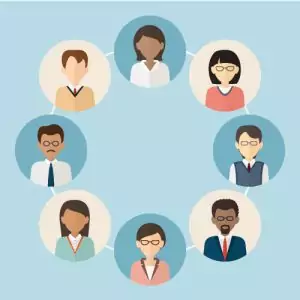When Big Data Creates Big Stereotypes

Talent and HR departments everywhere are jumping onto the Big Data bandwagon, and with good reason. The promise of big data is a mighty appealing one – better-informed decision-making that has a real impact on organizations. However, one dark side of big data is the potential for misinterpreting all that data. And that can lead to the creation of persistent stereotypes that hold people back and color their perceptions of others.
Generational Stereotypes
Case in point: Millennials have gotten some bad raps in the workplace. They are sometimes characterized as displaying a sense of entitlement, being lazy and even  disloyal. Where in the world does that come from? The answer is data. This is what happens when people pick up on a bit of data and run way too far with it. The bad rap on loyalty stems from the fact that the US Bureau of Labor Statistics said that average job tenure among millennials is just 3.2 years. The reactions to that statistic was something like, “How dare they be so flippant in their loyalty, leaving jobs so quickly.”
disloyal. Where in the world does that come from? The answer is data. This is what happens when people pick up on a bit of data and run way too far with it. The bad rap on loyalty stems from the fact that the US Bureau of Labor Statistics said that average job tenure among millennials is just 3.2 years. The reactions to that statistic was something like, “How dare they be so flippant in their loyalty, leaving jobs so quickly.”
Unfortunately, that was a poor interpretation of the data. There’s more to the making of that statistic than loyalty – layoffs, the down economy, poor job availability that has millennials hopping from one underemployed situation to another – none of which have anything to do with being loyal to a great employer. And yet that stereotype persists, and some companies are wary of hiring millennials because of it!
This kind of generational stereotype is particularly pernicious because it creates a very unhelpful “us versus them” kind of mentality in the workplace. This is when you get Baby Boomers walking around grumbling about “these darn kids” and their sense of entitlement. It can really bog down collaboration and productivity.
The thing about stereotypes, of course, is that there is always at least a kernel of truth in them. There undoubtedly are some disloyal millennials out there, so at least some people confirm the bad stereotype from their own experience, which helps perpetuate the stereotype. The problem is when you paint entire populations with that very broad brush, then everyone is colored by it, whether it’s accurate or not.
Data-Busting Stereotypes
A much better use of data is to put it in the service of testing and possibly de-bunking stereotypes. When you think about all the classic stereotypes about the differences between men and women, this gets played out in organizational leadership like this: Women “take care” while men “take charge.” The persistence of these gender stereotypes have a lot to do with the huge gender gap in leadership – women make up 45% of the workforce, but in 2005 there were only 17 female heads among Fortune 1,000 companies.
And yet an examination of dozens of studies will reveal this: There are really very few differences between men’s and women’s leadership. In fact, with the rise of such concepts as emotional intelligence, what we’re really seeing is a coming together of the stereotypes into a more unified manifestation of excellence in leadership.
Getting back to generational stereotypes, let’s take a look at some common ones that are applied to older workers:
- They are less motivated.
- Less willing to undergo training/development.
- More resistant to change.
- Not as trusting.
- More likely to have health problems that get in the way of work.
- Are more vulnerable to work-family conflicts.
Looking at that list, some of them seem like pretty reasonable stereotypes, right? And yet an extensive meta-study in 2012, Evaluating Six Common Stereotypes About Older Workers with Meta-Analytical Data, revealed that none of them were supported by the data.
It’s important for learning professionals to know what the stereotypes are, and to understand how they are or are not supported by real data. After all, you can’t afford to have stereotypes getting in the way of organizational success.